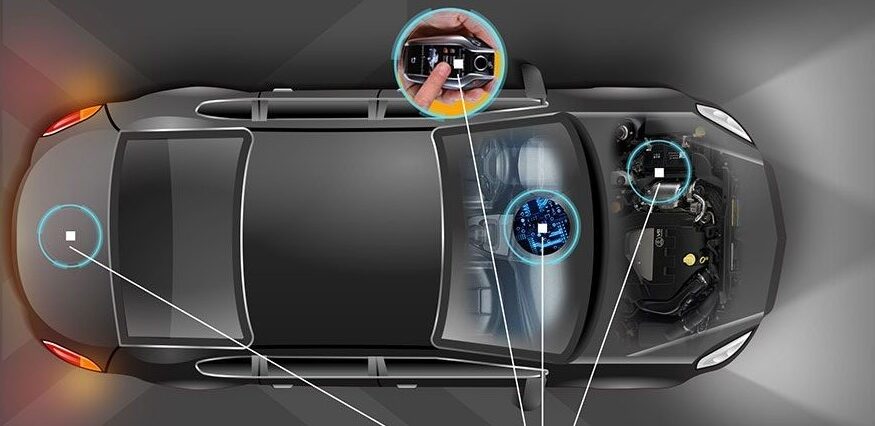How supercapacitors are revolutionizing e-mobility

While not seeking to replace batteries completely, supercapacitors are certainly reshaping the future of electric vehicles (EVs). From the smallest components, such as car keys and radios, to an EV’s power source, supercapacitors are the perfect companion to batteries for improving performance and increasing sustainability.
Unlike batteries, supercapacitors excel in rapid energy storage and release, providing a burst of power precisely when needed. This unique capability, coupled with its exceptional lifespan and efficiency, is catapulting supercapacitors to the forefront of e-mobility innovation.
Supercapacitors provide the quick bursts of power needed in stop-start systems
Conventional batteries use a chemical process to generate electrical energy, whilst supercapacitors rely on electrostatic techniques to charge up and release energy repeatedly, millions of times.
Though this method enables supercapacitors to provide fast charging and millions of discharge cycles, they cannot hold the charge for long. This means they cannot work as a complete replacement for batteries but instead act as brilliant companions for e-mobility applications.
The quick bursts of power delivered by supercapacitors are ideal for stop-start and mild hybrid architectures. In stop-start and hybrid models, supercapacitors provide power quickly and easily to a vehicle’s engine without straining the main battery. When the car brakes or the suspension system moves, the supercapacitors capture that energy and reuse it without accessing the battery pack.
The process takes place at a rapid speed so that electricity is stored and discharged at the rate required for sudden breaking and quick acceleration. This saves energy and makes the whole system more efficient, extending how far an EV can travel on a single charge.
Supercapacitors offer fast charging, reducing the charge times of EVs
One of the biggest challenges EV owners face, and one of the biggest deterrents to those who have yet to purchase one is charging times. However, adding supercapacitors as an energy storage solution easily tackles this issue.
As mentioned, supercapacitors’ electrostatic techniques enable them to charge and discharge much faster than conventional batteries. This could mean charging EVs in minutes rather than hours in the future.
Supercapacitors can extend the lifespan of an EV
While various factors influence the lifespan of EVs, the choice of energy storage solution likely has the most significant impact.
Supercapacitors are generally less prone to degradation compared to traditional batteries. The physical mechanisms that supercapacitors rely on to store energy mean they can endure more charge-discharge cycles over the lifetime of an EV. In contrast, the chemical process used in lithium-ion batteries causes more damage at a faster rate.
This improved lifespan serves many benefits to EV owners, including reduced costs due to not needing to replace the energy storage system in their EVs as frequently.
Supercapacitors power more than just the EV itself
Beyond powering EVs, supercapacitors also prove invaluable as energy storage solutions for various components in the e-mobility sector.
For instance, coin cell supercapacitors could replace the coin cell batteries used in key fobs. This would allow for more streamlined and compact designs and significantly diminish the frequency of battery replacements being needed.
Another potential application is the GPS tracking systems installed in every modern vehicle. These require intense energy to fuel the complex data being fed into the system in real-time. Supercapacitors have many benefits that make them ideal for this application, such as working in different temperature ranges, which is crucial when installed in a dashboard or trunk. Supercapacitors’ form-fitting capability also makes them an ideal solution for new, increasingly compact designs.
Moreover, supercapacitors not only offer an additional layer of value by serving as a backup energy source in case of main battery failure. They also play a crucial role in safeguarding the extensive data generated by the multiple software systems within EVs.
EVs come equipped with various sophisticated software that enables drivers to simultaneously listen to music, track their location, monitor their speed, and much more. However, the reliance on the main power supply for these functions poses a potential risk to the vast amounts of data accumulated.
In the event of a power breakdown, supercapacitors step in as a secondary power source, ensuring the security of all data housed within the EV and mitigating the risks associated with interruptions in the primary power supply.
Supercapacitors are the future of e-mobility
Integrating supercapacitors into e-mobility systems represents a pivotal step toward a more efficient and sustainable future. By excelling in providing quick bursts of power, decreasing charge times, and extending the lifespan of EVs, supercapacitors address specific challenges faced by the e-mobility industry, particularly in stop-start and hybrid architectures.
Integrating supercapacitors into e-mobility systems will play a huge role in moving the conversation around EVs in a more positive direction, as it helps tackle many of the difficulties drivers face, such as charging times and costs.
As research and development continue to advance, the synergy between supercapacitors and traditional batteries promises a harmonious partnership that will drive the EV industry forward.

